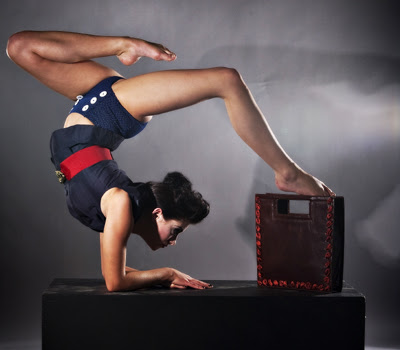MQN: Did you make a conscious decision to get your bag designs crafted in Europe, why not Africa or Asia?
Funmi A: No I didn’t. I'm currently based in the UK, so I know more about the European craftsmanship than anywhere else. Also being at the centre of production was very important to me, so Europe became the obvious option.
MQN:How has the public response been so far to Rebirth bags?
F.A: Great enough to make me have sleepless nights on the next collection
MQN: What inspires the work you do?
F.A:Quality, style, individuality
MQN:How much work goes into making one bag? What's the process?
F.A: This depends on the type of bag, but the basic from design to the finished product involve the following:
- Design - The first step is the task of designing a new model. The aim is to conceptualise and idea into visuals enough to be understood by anyone. To create a bag that will not be dated in seasons to come and, at the same time, retains that unique touch of quality and originality.
- Prototype - After finalising the design, we move to the next process: the making of a prototype of the bag in paper. Patterns are cut out based on the design and we transfer the idea to paper to create an actual paper model of the bag. This is the stage where the bag begins to take shape.
- Leather Choice – The moment the prototype is signed off, we always need to take into consideration the type of leather that will be used to make the handbag. For example if we are working with a structured design, we’ll be looking for leather that is firmer and rigid like croc skin, but if we are going for the soft designs then we can consider lamb skin. Every skin has a unique quality and advantage that suits different models of handbags.
- Final Product - Once the prototype is perfected and the type of leather has been decided, it is time to create the final product. This work is entirely carried out by hand and becomes even more complicated when using valuable leathers, and the key focus is to get it right first time. Once the skin has been cut according to the prototype, the next stage is the stitching of the handbag. This is putting together the bag and recreating the prototype from actual leather. The leather is either hand-stitched or sewn with the simplest of sewing machines, which allow finer and straighter stitches and also manoeuvring of the more tricky parts.
- Finishing – Though the bag stitching is done, the bag is not completed and still looks quite different from the finished product. It lacks all the important details, such as buckles and zips, and the leather itself is still unfinished sometimes. During the finishing process the handbag is carefully examined, quality controlled and all the final details and hardware are added. In some cases, the leather is treated and polished. This is the point where we have the final product.
MQN: What the most important (or should I say gratifying) aspect of what you do?
F.A: The fact that I am actually doing the one thing I love most
MQN: What's your least favourite aspect of designing?
F.A: None. Every stage is a build up to the next.
MQN: It seems like you main markets are Nigeria and the United Kingdom...In terms of fashion and what you've see and experienced, how do these markets differ?
F.A: From my experience, I realised the Nigerian markets would rather go for a known brands, while UK is more of the design.
MQN: How would you describe your personal style?
F.A: I like to keep things simple, I always stick with the basics and then dress it up with accessories
MQN: Where do you shop?
F.A: Anywhere where quality product are available.
MQN : Prior to starting your own bag line, which bag brand was your absolute favourite?
F.A: I do not have an absolute favourite. Form and function govern my bag choices, over brands. And this cuts across all brand lines.
MQN: What can we expect from your next collection?
F.A: A collection that represents work, play and everything in between.
MQN: Where did you draw inspiration from?
F.A: My friends and people close to me – I look at them and try to design to design bags they can work into their different lifestyles





No comments:
Post a Comment